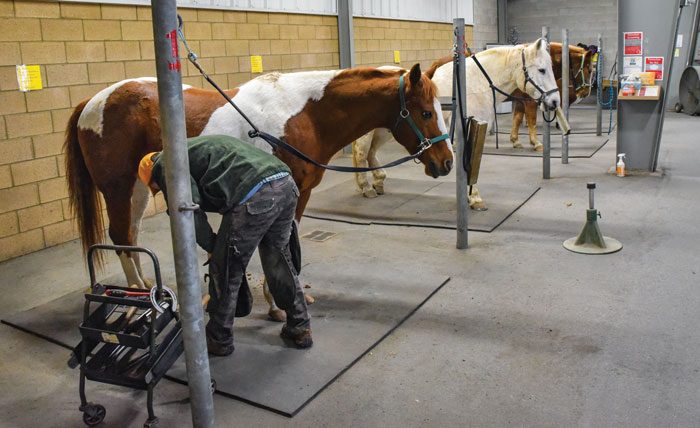Having horses ready to go is typical for Tennessee farrier Billy Lampley’s farriery business.
He usually texts clients twice before going to their barn: 10 minutes before leaving the previous barn and when he begins driving to their property.
“The only way we can manage the day efficiently is by texting the client before we come,” Lampley says. “The owners understand that we aren’t trying to rush to finish their horses, but we’re maximizing our day.”
Lampley doesn’t like to schedule immediately for the next appointment because horse shows will disrupt scheduling. Before texting, his wife would make the phone calls on Sunday evening letting clients know the day and part of the day his team would come. A laborious chore of hours became a 20-minute task on Sunday evening thanks to texting.
Lampley likes scheduling on parts of the day like mid-morning or early afternoon because it gives the clients a time frame, but isn’t as rigid as a specific time. This open scheduling helps him group the day for a particular area so he doesn’t have to drive back and forth across the county. Lampley says whether you schedule immediately or his style, the key is to get clients trained to expect being scheduled.
“If you rely on the clients to call you, they may not call you for 12 weeks during the winter, if at all,” he says. “Teach them that the scheduling is your responsibility as the farrier. This can only work through trust. You have to be a person of your word and show up when you say you will. That level of trust doesn’t happen overnight.”
Learn More
- Building a Practice for Changing Times: Tennessee farrier Billy Lampley has adjusted his practice, while remaining committed to “keeping things simple.”
- Don’t Underestimate the Value of Experience When Setting Hoof-Care Prices: Pennsylvania farrier Dave Werkiser says farriers must have confidence in your experience when raising your prices.
- Basic Customer Service Helps You Retain the Clients You Want: Good work and customer service are the hallmarks of a successful business.









Post a comment
Report Abusive Comment